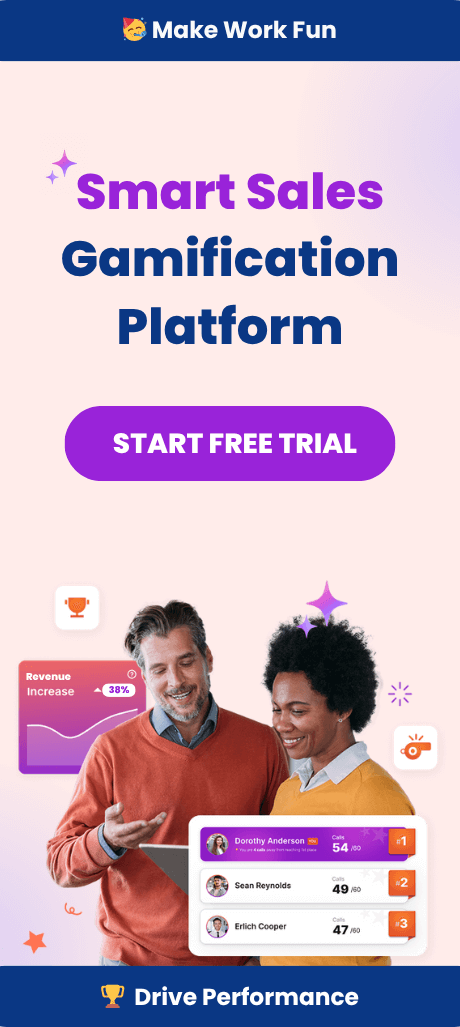Digital Leaderboards: Uniting Sales Teams
The Shifting Nature of Sales Team Engagement
The sales landscape is not what it was just a decade ago. Remote work models, distributed teams, and rapidly evolving technology are fundamentally changing how sales organizations think about engagement. For executive leaders, the challenge today extends beyond simply tracking metrics on a spreadsheet. It has become about creating environments where sales professionals feel visible, valued, and deeply connected to performance outcomes—increasingly, this is being accomplished through digital leaderboards.
The Rise of Digital Leaderboards in Modern Enterprises
As competition intensifies, sales leaders have turned to digital leaderboards to address the universal desire for recognition, clarity, and real-time feedback. Unlike their analog predecessors, these sophisticated platforms synthesize live data from multiple sources and present it on screens that capture attention across both physical and virtual offices. The power of digital leaderboards sits not merely in visualizing results but in their ability to cultivate momentum, transparency, and healthy competition. As explored in Are Leaderboards Still Effective?, this technology has proven lasting value—even as sales cultures shift.
Why Visibility Drives Engagement
One of the most compelling principles underpinning digital leaderboards is the relationship between visibility and engagement. When contributions are seen, motivation naturally rises. This isn’t merely a function of reward; it’s a core human need to know our work matters. Digital leaderboards transform engagement from private to public, driving individual accountability and collective momentum. Sales professionals who see their achievements elevate not just their own performance, but that of their peers, are more likely to sustain high levels of productivity. Insights from Digital Leaderboards Shape Winning Cultures delve deeper into how visibility sparks competitive excellence.
The Mechanics Behind Effective Leaderboards
At a technical level, not all digital leaderboards are created equal. High-performing organizations build their leaderboards on a foundation of trustworthy data flows, accessible interfaces, and flexible customization. Success lies in how these platforms seamlessly integrate with existing sales systems—like CRMs or call center solutions—while also enabling leaders to tailor what is measured and celebrated to fit their unique KPIs and milestones. A customizable leaderboard is essential for ensuring the system resonates and remains relevant as business objectives evolve.
Core Features of an Impactful Digital Leaderboard
- Real-time sync with data sources (CRM, phone systems, sales enablement tools)
- Role-based visibility of the board (e.g., managers, teams, individuals)
- Configurability for metrics, recognition moments, and seasonal competitions
- Mobile, desktop, and meeting room display compatibility
- Integration with employee engagement software and analytics dashboards
Healthy Competition: Motivating Without Alienating
For many sales leaders, there is a lingering concern: Could too much visibility create unhealthy pressure or spark disengagement among lower performers? Here, the best digital leaderboards prioritize celebration, not just ranking. Introducing badges, personal bests, and incremental achievement tiers ensures that every rep, not just the front-runner, feels they have meaningful milestones to pursue. Leaderboards can showcase not only top-line sales, but KPIs around progress, teamwork, or customer engagement. This more holistic approach, as discussed in Leaderboards Done Right: Avoiding the Pitfalls of Sales Competitions, forms a culture that nurtures success up and down the team.
Linking Leaderboards to Broader Engagement Strategy
Digital leaderboards should rarely stand alone. They act as the communication centerpiece of a multi-layered engagement strategy that might also include coaching, formal recognition programs, and incentive structures. The leaderboard’s public visibility amplifies the impact of these interventions, while integrated analytics help leaders identify where additional support or recognition is needed. Real-time data also enables agile decision making—allowing teams to spot patterns, act quickly, and sustain motivation across sales cycles.
Connecting Leaderboards with Engagement Programs
- Trigger pulse surveys or one-on-ones based on leaderboard changes
- Spot and address dips in morale or engagement
- Create cross-departmental competitions to break down silos
- Align recognition programs with board achievements for greater resonance
Data Integrity: The Trust Foundation
Visibility loses value when trust in the underlying numbers comes into question. Flawless integration with CRM, clear rules on what gets measured, and transparent auditing are non-negotiable musts. Sales teams, particularly seasoned professionals, quickly tune out leaderboards if they suspect favoritism, data lag, or metric manipulation. To foster genuine engagement, leaders must communicate exactly how numbers are tracked, how disputes are resolved, and why specific KPIs are being prioritized at that moment in time.
Personalization: Making Leaderboards Relevant for All Team Members
The days of a single, one-size-fits-all sales leaderboard are over. Today’s digital solutions allow for intensely personalized displays. Teams can run tailored competitions: from outbound call volume to customer satisfaction scores, from speed of onboarding to cross-sell ratios. For enterprise organizations with multiple tiers and specialties, this flexibility is essential. Sales reps in diverse roles—inside, outside, enterprise, or product specialists—can all see their impact clearly and meaningfully visualized.
Types of Leaderboard Personalization
- Role-based KPIs and metrics per team or segment
- Geographic and remote-friendly leaderboard formats
- Seasonal or themed boards (think: quarterly sprints, product launches)
- Recognition of both individual and team-based success
Driving Continuous Improvement, Not Just Celebration
There is a critical distinction between a leaderboard that simply showcases results, and one that helps teams learn and grow. High-value digital boards offer insights over time, revealing who is improving fastest, where bottlenecks exist, and how coaching interventions can be fine-tuned. These systems open a new realm of sales analytics, enabling coaching tools like Spinify (Book a Demo) to overlay historical data and suggest targeted development for each rep. By translating numbers into action, sales leaders shift the narrative from static competition to dynamic team growth.
Enriching Company Culture Through Shared Wins
Industry research demonstrates that shared recognition moments cement positive culture. By openly celebrating every milestone—first closed deal, most improved conversion rate, collaborative achievements—leaderboards create a rhythm of high-fives across the organization, regardless of location or time zone. This sense of “winning together” underpins resilience and adaptability, helping teams weather volatility with confidence and camaraderie. To learn more about the cultural ripple effects of recognition, see The Power of Employee Recognition: Why It Matters More Than Ever.
Integrating Digital Leaderboards into Remote and Hybrid Team Strategies
The growth of remote sales teams has magnified the stakes for visible engagement mechanisms. Digital leaderboards are uniquely poised to reconnect distributed teams, creating a shared virtual “office wall” and enabling leaders to broadcast wins across continents with minimal friction. Whether displayed in a physical bullpen or within a dashboard on every rep’s device, leaderboards reinforce unity, align focus, and drive cross-team dialogue. Internal communication platforms, such as Slack or Microsoft Teams, can give leaderboard alerts prime real estate—keeping performance top-of-mind no matter where work happens.
Mistakes to Avoid with Digital Leaderboards
No tool is a panacea. Sales VPs and enablement directors should guard against several common pitfalls:
- Overemphasis on lagging rather than leading indicators of performance
- Public shaming of underperformers, eroding psychological safety
- Neglecting to update, refresh, or rotate leaderboard challenges
- Forgetting to pair competitive elements with coaching and recognition
Measuring the ROI of Digital Leaderboards
Senior executives have a responsibility to connect engagement technology to business outcomes. Digital leaderboards not only elevate KPIs like close rates and pipeline velocity, they also correlate with increased sales rep retention, shorter onboarding times, and improved employee satisfaction. When deployed as part of a broader engagement strategy—and fine-tuned to support rather than replace human leadership—leaderboards serve as measurable force multipliers.
Choosing the Right Digital Leaderboard Solution
The market for engagement management software continues to expand, with options ranging from standalone leaderboard apps to advanced employee gamification platforms. Decision makers must evaluate scalability, customization capabilities, and integration depth. The Spinify platform is an example of a customizable solution that enables multi-metric views, granular reporting, and seamless alignment with existing sales tools, all while making engagement both visible and actionable.
The Future of Sales: Connected, Transparent, Human
Digital leaderboards reflect a powerful shift in sales culture, blending technology-driven transparency with enduring principles of human motivation and recognition. For Sales VPs, RevOps directors, and CEOs committed to building cohesive, high-performing teams, these platforms are no longer nice-to-have—they are fundamental. When thoughtfully calibrated to the nuances of your business, digital leaderboards unite teams behind shared purpose, nurture healthy competition, and sustain engagement at scale. The modern sales floor may be virtual, but thanks to smart leadership and the right tools, its heartbeat has never been stronger.



